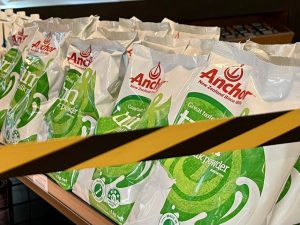
Fonterra cut its Farmgate Milk Price forecast range for the year from $9.30-9.90 per kgMS to $9.10-9.50 per kgMS. This reduces the midpoint of the range, which farmers are paid off, from $9.60 per kgMS to $9.30 per kgMS.
Fonterra CEO Miles Hurrell said the move reflected demand for dairy products which have been hit by the COVID-19 lockdowns in China, the economic crisis in Sri Lanka and the Russia-Ukraine conflict.
“While the long-term outlook for dairy remains positive, and we expect global demand and supply to be more balanced over the rest of the year, we have seen these short-term impacts flow through into pricing on the Global Dairy Trade (GDT) platform. For example, average prices for whole milk powder (WMP), a key driver of the milk price, have decreased by 18% over the past four GDT events,” he noted.
Fonterra’s scale and value-added focus offers comfort
Fonterra exports dairy products to 140 countries worldwide and Hurrell said the cooperative has to ‘deal with these kinds of global events all the time’.
However, the current situation is distinct because the dairy markets are seeing ‘the impact of multiple events’. “Coupled with inflationary pressures, it’s not surprising to see buyers being cautious,” the chief executive noted.
Conceding that this update will be ‘disappointing for our farmers’ Hurrell stressed that the dip comes off the back of ‘record high’ farmgate milk prices. “At a midpoint of $9.30 per kgMS, this would continue to be the highest forecast Farmgate Milk Price in the Co-op’s history and would see us contribute almost $14 billion into New Zealand’s economy through milk price payments, which supports the wellbeing of our local communities.”
Fonterra remains well-placed to manage any downward pressure on pricing thanks to its scale and focus on high-value products, the dairy executive claimed. “Our scale and ability to move products between different markets and categories remains important, and reinforces our strategic focus on ensuring our milk is going into the highest value products.
“Looking out to the rest of the year, global milk production is expected to remain constrained as high feed, fertiliser and energy costs continue to impact production in the Northern Hemisphere, and we expect demand to recover as the short-term impacts begin to resolve,” he predicted.
The majority of Fonterra’s milk has been contracted or the season, allowing the company to narrow its milk price forecast. However, Hurrell did note a degree of ‘uncertainty’ on the global dairy market. “As always, there are a number of risks we are continuing to keep a close eye on, including potential impacts on demand from inflationary pressures and rising interest rates, increased volatility as a result of high dairy prices, and further disruptions from COVID-19 and geopolitical events.”






















